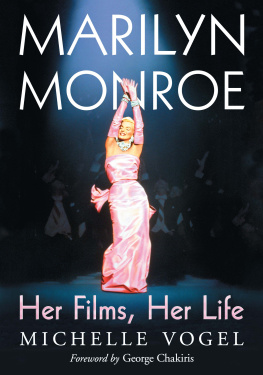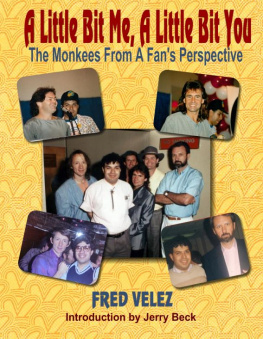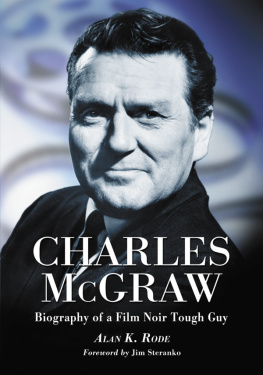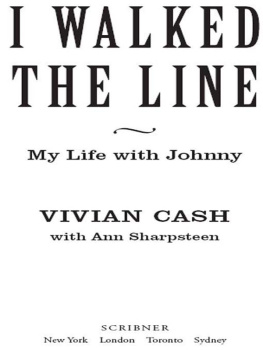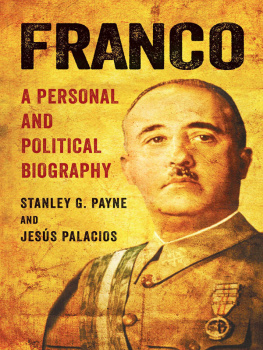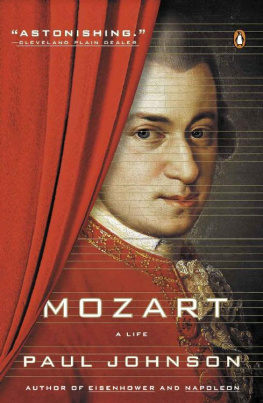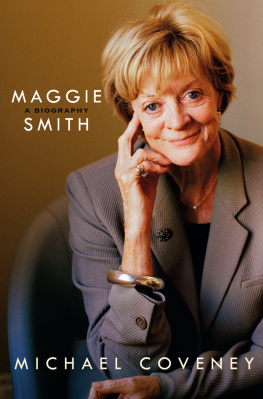Lupe Vlez
The Life and Career of Hollywood's "Mexican Spitfire"
Michelle Vogel
Foreword by Kevin Brownlow
McFarland & Company, Inc., Publishers
Jefferson, North Carolina, and London
ALSO BY MICHELLE VOGEL AND FROM MCFARLAND
Olive Borden: The Life and Films of Hollywoods Joy Girl (2010)
Olive Thomas: The Life and Death of a Silent Film Beauty (2007)
Marjorie Main: The Life and Films of Hollywoods Ma Kettle (2006; paperback 2011)
Gene Tierney: A Biography (2005; paperback 2011)
Children of Hollywood: Accounts of Growing Up as the Sons and Daughters of Stars (2005)
LIBRARY OF CONGRESS CATALOGUING-IN-PUBLICATION DATA
Vogel, Michelle, 1972
Lupe Vlez : the life and career of Hollywoods Mexican spitfire / Michelle Vogel ; foreword by Kevin Brownlow.
p. cm.
Includes bibliographical references and index.
Includes filmography.
ISBN 978-0-7864-6139-4
1. Vlez, Lupe, 19061944. 2. Motion picture actors and actressesUnited StatesBiography. 3. Motion picture actors and actressesMexicoBiography. I. Title.
PN2287.V43V64 2012
791.4302'33092dc23 [B] 2012022490
BRITISH LIBRARY CATALOGUING DATA ARE AVAILABLE
2012 Michelle Vogel. All rights reserved
No part of this book may be reproduced or transmitted in any form or by any means, electronic or mechanical, including photocopying or recording, or by any information storage and retrieval system, without permission in writing from the publisher.
On the cover: Lupe Vlez strikes a pose in a classic mid1930s Hollywood glamour portrait that showcases her beauty; background 2012 Shutterstock
McFarland & Company, Inc., Publishers
Box 611, Jefferson, North Carolina 28640
www.mcfarlandpub.com
Table of Contents
Acknowledgments
A very special thank you to the people mentioned below, all of whom contributed to this project in some way. This book wouldnt be as thorough as it is without your input, support and enthusiasm to tell Lupe Vlezs story as it was meant to be told.
In no particular order, Jeff Stafford, G. D. Hamann, Craig Harvey, Bill Caffrey, Rick Egusquiza, Martn Caballero, Marielis Orom, Rosa Helia Villa, Andy Lauer, Paul Ginsberg, Dick Moore, Bill Cappello, Alistair Tremps, Robert Osborne, Laura Petersen Balogh, Viviana Garca-Besn, E. J. Fleming, Hugh Munro Neely, Gregg Nystrom, Dr. Levica Narine, Jared Case, Caroline Yeager, Hal Erickson, Kay Shackleton, Michael Ankerich, Billy Doyle, Diane Lussier, Joseph Worrell, Alex Monty Canawati, Stephanie Swengel, Antoinette Garza, Uwe Linnemueller, Jon Mirsalis, David L. Smith, William M. Drew, Kevin John Charbeneau, Kristine Krueger, Valerie Yaros, David Ybarra, Gor Megaera, University of Washington Libraries (Special Collections), the Library of Congress (Recorded Sound Reference Center), the Mary Pickford Institute, Turner Classic Movies, George Eastman House, 20th CenturyFox, Beverly Hills Police Department (archives), Our Lady of the Lake University (archive material), the Margaret Herrick Library (Special Collections), the Los Angeles Public Library and the Museum of Modern Art.
Academy Awardwinning film historian Kevin Brownlow contributed the foreword. Im humbled and honored for our names to share a book cover.
Paul Green is my fellow author and good friend. The all too often lonely road of assembling and writing a book is boosted greatly by our daily e-mail banter.
I thank Pedro Quintanilla Gmez-Noriega for his invaluable personal recollections and family photographs of his Villalobos-Reyes relatives, as well as many clarifications, translations and explanations of the Spanish language and Mexican culture in general. Without doubt, this book would be a lesser work if it werent for his involvement and willingness to share personal stories for the benefit of the readers better understanding of Lupes early years.
Rogelio Agrasnchez Jr. and Xchitl Fernndez of the Agrasnchez Film Archive generously shared their vast collection of photographs and knowledge of Lupe Vlez and the Mexican film industry, as well as providing countless Spanish-to-English translations from vintage newspapers and magazines.
The usual suspects ... my parents, my big boys Josh and Reeve, my little boy Ryan, and my husband Matt, for tracking down several vintage film magazines that contained much of the information that was included within these pages. Thank you for your love and support, in all that I do.
My life story? It is the story of a devil. And who wants to print the story of a devil? I am wild, I cannot help it.Lupe Vlez in an unidentified newspaper clipping from around the 1930s.
Foreword by Kevin Brownlow
In the beginning, there was no such thing as a film star. Financiers were anxious to avoid the mistakes they had made in the theater. Having given in to their actors demands, having parted with staggering sums of money, they had had to surrender to further outrageous demands. One picture company, the Biograph, provided no cast list on their films, yet audiences preferred their players to any others. They named their favorite The Biograph Girl but it took another company to poach her and to make her real name known: Florence Lawrence. Her replacement was even more popular. Incredibly popular. Once the audiences knew her nameMary Pickfordthe star system had taken over, an integral part of the industry.
It was assumed the moment an idol was found to have feet of clay, audiences would desert the theaters and the industry would collapse. The early stars could thus rely on the police to conceal their peccadilloes. They may get fined for speeding but they could run someone over with impunity.
But then came a series of scandals that could not be covered up. Comedian Roscoe Arbuckle, accused of manslaughter, was put on trial and banned from the screen. Editorials expressed horror as more and more errant behaviordrugs, drink, sexcame to light. Womens clubs protested. Did this drive the audiences away? There had been a postwar slump already, and the industry had panicked, but people came back in ever-larger numbers. Arbuckles trial sold more newspapers than the sinking of the Lusitania.
Reporters realized that the shenanigans of Hollywood made wonderful copy and sold thousands of papersso long as the stories were true. If they were untrue, why, they would sell even more. What your average newspaperman prayed for was a gorgeous star with a wayward temperament. They had had Mabel Normand, a brilliant comedienne who was often on something, and then came Clara Bow, who was equally gifted but took her stimulus in other ways.
Lupe Vlez, the Mexican Spitfire, was a combination of the two. Most audiences would first encounter her in an outstanding film with Douglas Fairbanks called The Gaucho. Dolores del Rio, also from Mexico, and famous for her role in What Price Glory?, had been Fairbankss first choice as The Wild Mountain Girl, but del Rio was already working on another picture. When someone (Eugene Pallette) pretended to kidnap Lupes precious Chihuahua and Fairbanks heard of her fury launched on the unfortunate practical joker, a spirited audition followed and he cast her at once.
In an impressive feat of research, Michelle Vogel has unearthed a large number of press stories. As she points out, the reporters were taken aback to find that Mexican Lupe had a reasonable command of English, so they went away and hoked up her dialogue with a vaudeville accent. Newspapers were intended as much for entertainment as the movies, after all. Remember those tough newspapermen in 30s films like


